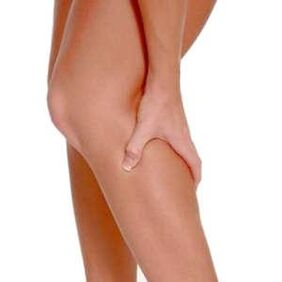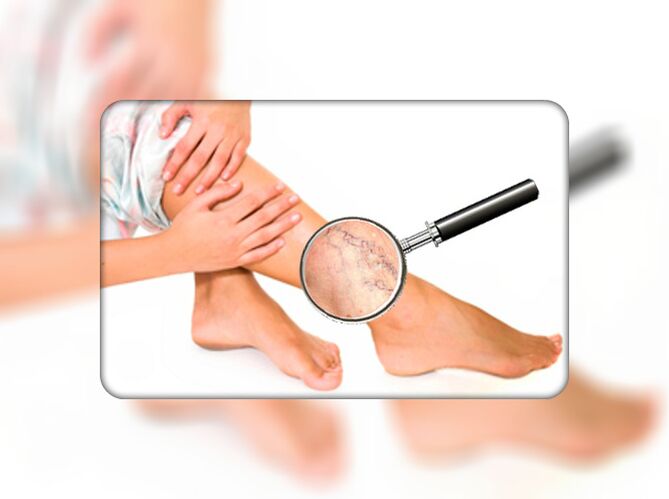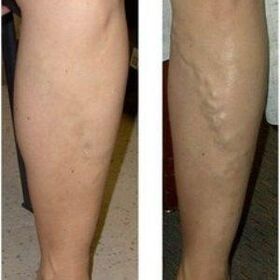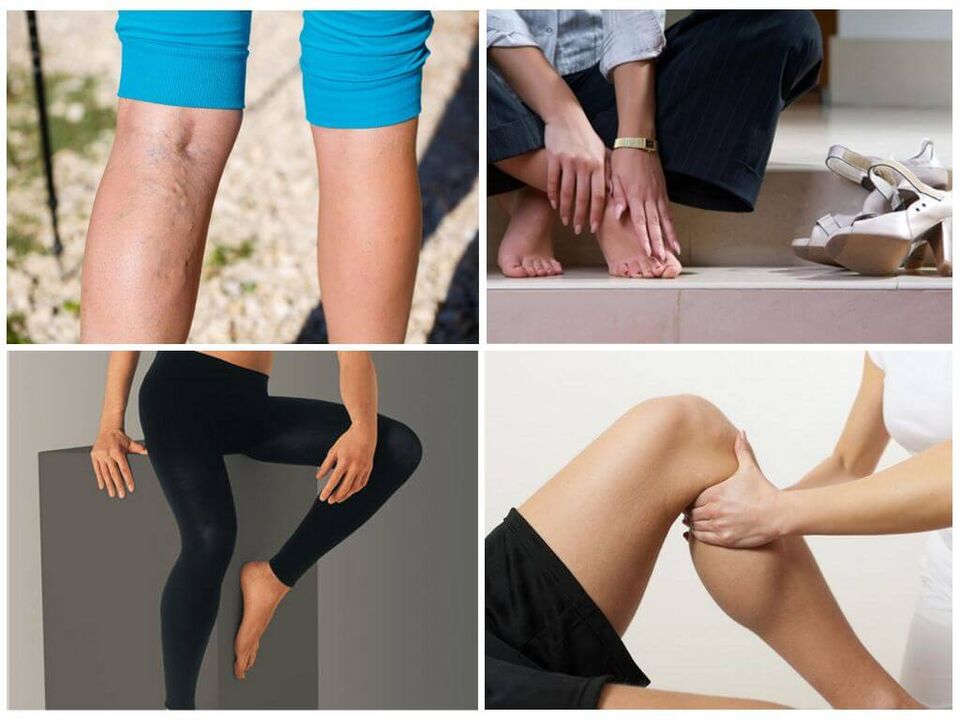Fracery vessels on the legs are most frequently susceptible because the lower limbs have a huge load every day. Various forms of this pathology are observed in 3 women and 5 men each.

The disease is characterized by certain clinical manifestations and complications that can significantly influence the ability to work and the quality of life. In addition, we will talk about varicose veins on the legs and about everything related to this phenomenon.
What are varicose veins
Varicose veins on the legs are a pathological state, accompanied by changes in the vessels (sack linen, increase in length, formation of nodes) as a result of the improper operation of venous valves and an impaired blood flow.
This disease has been known since ancient times, which is confirmed by numerous archaeological excavations.
reference. Today all 4 people on the planet suffer from such a pathology.
The insidence of the disease is that 50% of people do not even know that they have the initial stage of the disease. Women are subjected to such disease more often due to the characteristics of the perestroika course in the hormonal system.
In order to find out which varicose veins are on the legs, we turn to the characteristics of the anatomical structure and the physiological processes of the circulatory system.
Vienna - vessels through which blood flows from the body's organs to the heart. But arteries carry blood in the opposite direction - tissue and organs from the heart muscle.
In contrast to the latter, the veins have a small part of the muscle tissue, so one -sided flaps have a one -sided flap to prevent the opposite blood flow.
If these valves stop working for any reason, to function normallyThere is a bloodstream made of blood, which means that it does not flash as it should, but below.
As a result, a congestive phenomenon is formed - blood collects in the legs and under his pressure the vessels begin to expand and deform.
The consequences of such processes will soon be seen with the naked eye on the feet. Blue -green or bluish lines, which then protrude strongly above the surface of the skin, can be felt under the skin.
With age, the pathological state usually exacerates because it develops quite slowly at first and then progresses quickly.
Reasons

The causes of varicose veins of the lower extremities are very different. Scientists dedicated a lot of time to study this problem, not characteristic of other living things.
reference. Some believe that this is a kind of retaliation of humanity when it comes to having the possibility of uncomplicated, with the legs experiencing a great pressure of the entire body weight.
In addition, experts found a whole list of factors that appear on the feet of varicose veins. This includes:
- Inheritance-The risk of the appearance is around 70%if one of the related varicose veins had. The disease itself is inherited, but the structure of the vessels is genetically determined: weak venous walls, inferior flaps.
- Inactive lifestyle- If a person moves little, the tone of the blood vessels weakens, the pressure in the veins stagnates the blood.
- Overweight- one of the most common reasons. At the same time, the risk of developing the disease increases in relation to the increase in fat tissue in the body.
- Excessive physical activity- The venous pressure is repeatedly increased when a person spends their feet almost all day, especially when lifting weights.
- Violations in endocrine and hormonal systems- affects the female gender because hormonal mistakes become causes of stagnation. Such periods are pregnancy, time after birth, menopause.
- Shoes-They are in constant tension, which is why the blood flow is disturbed by deep veins. As a result, the blood rushes to the surface veins, the valves of which cannot be finished with the load.
However, these are not all the reasons that cause the development of pathology. There is another point from which it comes through varicose veins and is associated with disorders in the nervous system and in the psychological state of a person.
Psychosomatics of varicose veins
Psychosomatics- A direction in psychology that examines the influence of psychological factors on the development of somatic (physical) complaints.
It has been known for a long timeAll processes in the human body are controlled by a brain that is controlled by consciousness.
It is therefore assumed that the causes of all diseases are in the head and are psychosomatic.
This means that the occurrence of deviations in the healthcare system causes internal experiences or stress from stress.
reference. In oriental medicine it is assumed that varicose veins are a psychosomatic illness.
The causes of the psychosomatics of varicose veins are such psychological conditions:

- Stress;
- Depression;
- Stagnation, lack of goals of life;
- Neurosis;
- long stay in difficult conditions for the psyche;
- A breakdown.
All of this has a negative impact on the body's nervous system, and the following occur.The elasticity of the walls of the blood vessels is regulated by the ends of the nerve fibers.
The type of their activity changes under the effect of such psychological factors. As a result, the tone of the veins is reduced, the lumen in the vessels increases, which prevents the valves from operating.
The therapy of varicose veins that have arisen on nervous soil requires a special approach and with the participation of several specialists from different profiles.
Symptoms
This disease is characterized by characteristic symptoms that are easy to determine.
The first symptoms of venous circulatory diseases are:
- Severe, pain, burning feeling, itching.
- Daubiness, rare cramps at night.
- The appearance of a vascular network of a bluish-red color.
If you do not recognize or start therapy of such pathological processes, the disease will continue your progress, and new symptoms will be added: new:
- The appearance of the seal on the leg with varicose veins begins to peel and covered with stains.
- Pain in the muscles that increase when walking;
- the manifestation of venous nodes that protrude above the surface of the skin;
- A feeling of pain in pressure with your fingers in the veins.
In addition, swelling of the legs can be observed, which is a serious warning of the dynamic development of the disease, since the deep veins are no longer able to cope with their work.
Reference.Отттттвие лечения мONONENT ыONE развити keepe
How varicose veins develop
Previously, a mechanism for the development of venous expansion of veins on the legs, which consists in the wrong blood flow (down), was taken into account due to diseases of the work of the special flaps.
As a result, the symptoms of pathology marked by the sequence of development manifest themselves.
The manifestations and the course of the disease in each individual case bear its own characteristics that depend on the age of the patient, health and the cause of the development of the phenomenon.

On the feet
The disease passes several stages of development: from minor signs to expanded veins on the legs and the sensations of pain.
Doctor of Medical Sciences V. S. Savelyev systematized the development phases of the disease, depending on the progress rate and the body's ability to heal himself.
Visual change in the lower extremities as a result of the development of varicose veins
In total, he identified three levels of the course of the disease:
- Stadium of compensation- There is no pain or completely insignificant edema to loads, vascular windows.
- Stadium of sub -compensation- Pain, fatigue, cramps, swelling in the evening, a feeling of bursting into the legs.
- Stadium of decompensation- The restoration of the skin (long cooked even small wounds) is disturbed, enlarged veins appear on the legs, severe pain and symptoms are determined.
In the stadium of decompensation, all systems of the body suffer:A weakening of the bone and muscle tissue occurs, the hair fails.
Do not delay the treatment and give pathological processes to carry out all degrees of development. The earlier the therapy begins, the more effective it is.
On the feet
There is no diagnosis of varicose veins in the international classification of diseases, but it often manifests itself in this part of the leg.
Reference. Very often the disease of the lower extremities begins with your feet.
The development of such a problem on the feet is almost the same as in the rest of the legs, with the exception of several points.
First there is a slight swelling of the footwhich is rarely noticed. It is added with another coursePain and a feeling to burst in the thumb.
Also appearscombustionGo with longer.
If nothing is done in this development stage, the disease will continue to progress with the occurrence of a vascular network on the inner or outer side of the foot and the extended blue veins.
Reference.Varicosis at the foot of the legs can also occur at a young age.

If you do not take the necessary measures, the disease continues and appears on the legs, calves and hips.
Diploma
Since this disease is very common, it is worth knowing everything about varicose veins: from the characteristics of development to symptoms and causes.
Such knowledge will not only help to determine and start treatment in time, but also to prevent the occurrence of pathology.






















